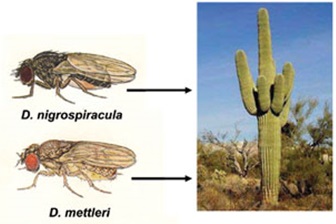
Strategies that help combat infection with parasites and pathogens are ubiquitous amongst free-living organisms. These range from the development of barriers that prevent infection in the first place, to the deployment of complex immune systems composed of biochemical, physiological, and cellular mechanisms, when these barriers fail. These strategies are often costly, resulting in trade-offs between infection-protection and longevity or fecundity, and the degree of their deployment may be related to the prevailing risk of infection.
Avoidance behaviours
In addition to the strategies listed above, some organisms have developed avoidance behaviours that decrease the risk of being exposed to infection at all. These then act as the first line of defence and can involve avoidance of locations where infection is more likely to occur or avoidance of other infected individuals.
Avoidance behaviours that have attracted particular research attention include changes in response to gradients of temperature, light or chemicals by moving to conditions that may be detrimental to the particular parasite or pathogen. These were reviewed in a volume of the Transactions of the Royal Society B in 2018.
One less-researched change of response associated with parasite avoidance behaviour is that to light gradients. Phototaxis, or movement in response to light, can play a prominent role in the life history traits of a variety of organisms, whether it be positive (towards light) or negative (away from light).
Collin Horn and colleagues from the University of Alberta have used the fruit fly Drosophila nigrospiracula as a model to investigate whether their response to light changes in the presence of an ectoparasite.
A cactus loving fruit fly
Drosophila nigrospiracula live on liquid extruded from rotting cacti in the Sonoron desert. They exhibit negative phototaxis, a behaviour that helps them feed and regulate their temperature in the fluctuating conditions of the desert. They are often infested with Macrocheles subbadius, a blood sucking mite that reduces survival and female fecundity. This research group has previously shown that infestation with this ectoparasite increases ambulatory and grooming behaviour, both energetically costly, and that mite infestation was less likely when the flies were in the light than in the dark. The researchers report their findings in a recently published study.
Phototropic responses
As female flies were the preferred host of the mites, these were used in the experiments. Virgins of female flies were places singly in a micro-arena and exposed to a mite, either in the light or dark, for one hour. A significantly higher proportion of the flies (31%) were infected in the dark arenas as opposed to 8% in the light.
In a second experiment, individual females, with or without a mite, were placed in a tiny choice chamber composed of a transparent tube with one end covered to darken it. A fly was placed in the centre and its position monitored once every minute for 10-15 minutes. The results demonstrated that unmated females are more photophobic than mated ones as they spent more time at the dark end. However, exposure to a single mite significantly increased the time spent in the light, whether the females were mated or virgins.
When males were tested in the chambers, they were substantially less photophobic than females, perhaps because they patrol territories outside of rotting crevices to attract mates.
Observation of mites in the choice chambers, either alone or with females, revealed that they did not show positive or negative phototaxis. The authors point out that these mites do not have light-sensing organs, so this is not surprising.
The initial observation that female fruit flies were more likely to be infected in the dark led to the hypothesis that females would increase their photophilic behaviour in the presence of a mite. The results supported this, suggesting the flies were exhibiting a form of behavioural immunity by moving to a condition where infestation was less likely.
Why is mite infestation less likely in the light than the dark?
The authors make two suggestions. Firstly, that it may be easier to detect mites in the light and thus use grooming and kicking behaviour to deter them. Alternatively, light may stimulate greater activity in the flies, whereas dark may stimulate rest/sleep and thus less resistance to the mites.
Moving to a lighter environment may improve the fitness of the flies in their native, desert, environment as the fitness loss of fecundity and longevity associated with infestation would be avoided. However, it could impose a fitness cost due to thermal stress and nutritional stress by removal from their cacti food source, a fluid exudate which evaporates quickly in the light.
As mite infestation imposes a heavy burden on these fruit fly populations it is likely to be a strong selective force in favour of avoidance strategies such as the one demonstrated in this study, despite trade-offs involved. Clearly it pays them to avoid the dark.

Comments